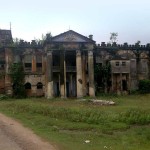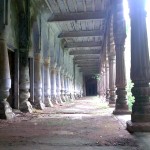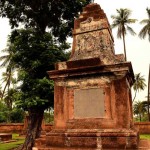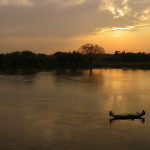Cossimbazar, also known as Kasimbazar or Kasim Bazar, is a census town in the Murshidabad district of West Bengal. The settlement lies on the riverbanks of Bhagirathi. In the past, the place formed a part of the Berhampore municipality. The number of people living in Cossimbazar in 1901 was only 1,262.
History of Cossimbazar
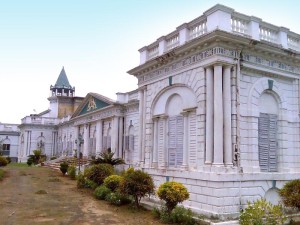
Despite the fact that the chronicles of the site can’t be deciphered previous to the 17th century, the place bore a lot of significance prior to the setting up of Murshidabad.
Since the establishing of industrial units in this area by the first European merchants, and following the destruction of Satgaon as a result of silting of the area where Saraswati River meets the Hooghly River, it achieved prominence as a big business hub in Bengal. Its prominence was uncontested till the time Kolkata was set up. The first English brokerage was set up in Cossimbazar in 1658. The person in command of the industrial unit turned into a member of council by virtue of an office in 1667.
The Bhagirathi was portrayed as the “Cossimbazar River” in English records in this era and also till the former part of the 19th century. The three-sided plot of land amid the Padma, Bhagirathi, and Jalangi, on which the city lies, was known as the Cossimbazar Island. The closeness of the industrial unit to Murshidabad, the administrative headquarters of the Nawabs of Bengal, though it was the principal source of its affluence and its governmental significance, subjected it to a invariable threat of assail. Therefore, Nawab Siraj ud-Dowlah acquired it as the first East India Company industrial unit in 1757. Subsequently, the chief and Warren Hastings, his aide were detained as captives to Murshidabad.
Still, Cossimbazar city continued to prosper in the start of the 19th century. By 1811, the place became well-known due to its hosiery sector, silks, magnificent ivory decoration, as well as koras. Nonetheless, the business-friendly ambience that it had at one time slowly deteriorated, possibly as a result of widespread malaria. Thus, the volume of arable land bordering Cossimbazar reduced considerably. The area was substituted by forest, and its destruction in 1813 was fulfilled when a drastic drift took place in the itinerary of the Bhagirathi. As a result, a new canal was created at a distance of three miles from the previous settlement, resulting in a foul-smelling marsh bordering the previous docks. Out of its grand mansions, only the well-decorated castle of the Cossimbazar Maharaja can be seen, and others were destroyed or can be symbolized just by huge heaps of mud. Warren Hastings’ first wife was laid to rest in this town and her burial place with the writing was still there in the beginning of the 20th century.
- Old Cossimbazar Palace
- Inside cossimbazar old palace
- Cossimbazar English Cemetery, Murshidabad
- Sunset At Lalbagh
Cossimbazar Palace
The palace is famous for housing the Lakshmi-Narayan Sila founded by Krishna Kanta Nandy, the zamindar of the place. Parts of the mansion that have been fully renovated include the front entrances, fences, clock tower with the clock decorations, front courtyard, north porch, marble staircases connecting the principal edifice, dining room objects, dance hall extensions, Andar Mahal, furniture, Sri Sri Radha Gobinda Mandir, Lakshmi Mandir, Ashutoshnath Shiv Mandir, Majlish Ghar, Chandimandap, and the lawns inside. Don’t miss out the Garbha Griha (sanctum sanctorum) of the Hindu temple here.
Flanked by Padma, Bhaghirathi and Jalangi the previously prominent Cossimbazar or Masuma Bazar, is neglected by tourists today. The once thriving popularity of silk is also dwindling today. In the year 1658, Job Charnock had worked as an assistant principal for a salary of INR 300 in Cossimbazar kuthi. In the year 1756, Shiraz conquered Cossimbazar.
However the Lakshmi Mandir and “Thakur Dalan (a huge space or courtyard dedicated for the worship of Gods or Goddesses) of the Cossimbazar palace are particularly known for their innovative architecture. There are around 100 pillars featuring intricate artwork, gracing the “ Dalan”. Check out the Neminath Jain mandir featuring 24 statues and footsteps of Jain Tirthankar.
Attractions
- Neelkuthi, full of intricate artwork (Panchanantala)
- The Behrampur College (Built as a replica of Oxford University)
- Bhagirathi’s banks (Lalbaadh)
- The ritual of floating small (false) boats with banana in the Bhaghirathi waters in order to please the Gods Kojha and Khirij (during one of the summer months—also known as Bera Bhasaan festival) –
- The fair, which is organized at the Lalbagh castle of the Nawabs
- The popular Muharram festival
- Cossimbazar English Cemetery
How to reach
You might as well take an auto rickshaw for touring Behrampur. Tangas are also available. You can conduct the entire tour of the Murshidabad, Behrampur and Cossimbazar area within 10 hours or so. The autos are likely to charge you on the basis of total hours or distance.
Image Source: Flickr

